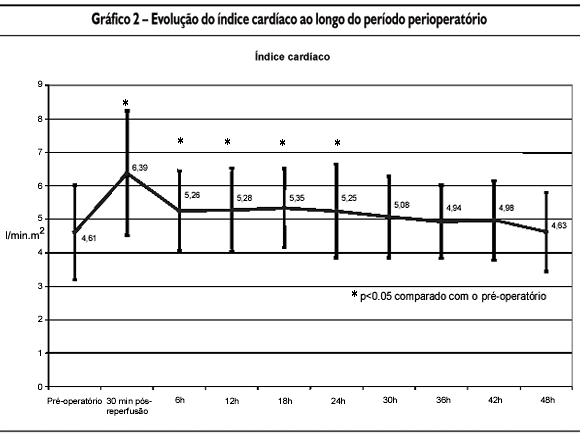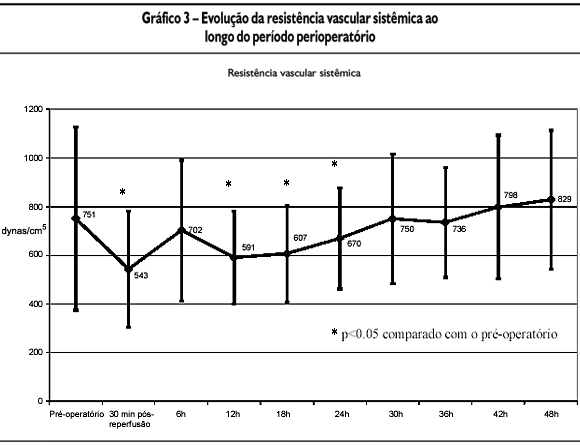OBJECTIVES: Although of great importance for all those involved in liver transplant, in literature there is no consensual description on its hemodynamic behavior. This study intends to describe the hemodynamic behavior during and in the first 48h after liver transplant . METHODS: A prospective and consecutive study of 61 patients was carried out; 50 were male, with average age of 49 years (18-70 years). Hemodynamic measurements were followed up at the beginning of the surgery, 30 minutes after revascularization of the graft and afterwards 6 hours up to 48h post revascularization. Weight was obtained upon hospital admission and at 6 o'clock on the first and second postoperative days. RESULTS: mean arterial pressure starts to increase soon after surgery, reaching significantly higher values 24h after revascularization. Cardiac index increases significantly soon after revascularization, progressively returning to preoperative values. Likewise the systemic vascular resistance falls significantly immediately after revascularization, reaching values similar to the preoperative ones 24h after revascularization. The pulmonary wedge pressure rises significantly 6 hours after revascularization and there is a significant weight increase at the end of the first postoperative day. CONCLUSIONS: During the first hours after liver transplant an intense hemodynamic variation is noted with progressive increase in the systemic arterial pressures and in the pulmonary wedge pressure. Furthermore, significant although transitory variations of the cardiac index and of the systemic vascular resistance demand continuous surveillance to minimize their consequences.
Liver transplantation; Hemodynamic phenomena; Intensive care






